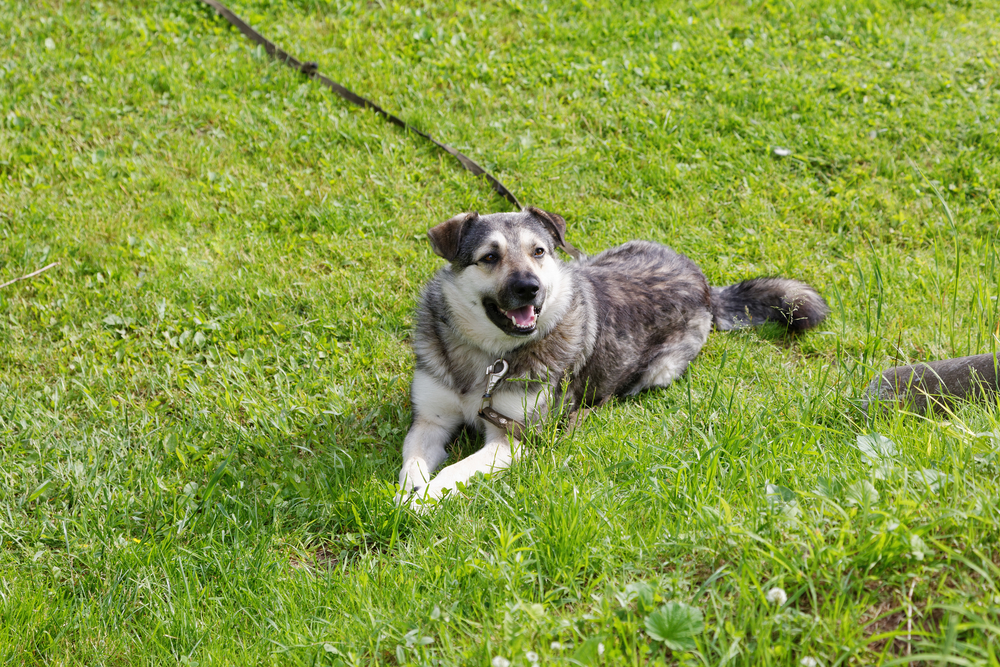Mar 30, 2018

Hot weather has arrived, and it is important that you know how to keep your pet safe despite the rising temperatures outside. With the high number of animals that suffer from heatstroke each year, AESC wants to take the opportunity to teach pet owners everything they need to know about heatstroke.
Heatstroke, also known as hyperthermia, occurs when the body’s core temperature rises above a level that is safe. Pets are at risk for heatstroke when they are outdoors in the summer for extended periods of time without a way to cool off. Since pets don’t have an efficient way to cool themselves as humans do with sweating, they are at an even greater risk of overheating and suffering from heatstroke. For pets, panting is the only means of expelling excess heating, aside from sweating, which can only take place around their paws and noses.
Humidity and confined spaces increase the risk of heatstroke occurring in pets.
Heatstroke in pets can be characterized by a few symptoms including:
These symptoms are very serious. Should your pet’s body temperature rise above 104°F, they are experiencing hyperthermia and need to be cooled down. When temperatures rise above 106°F, cells in the body can become damaged. Without veterinary treatment, pets can die from severe heatstroke. You can check to see if your pet is suffering from heatstroke by taking its temperature.
If your pet is battling heatstroke, you need to attempt to drop your pet’s core temperature. To do this safely, you can move your pet into a cool area and wet him or her with cool (not cold) water. For very small dogs, it may be better to use lukewarm water. You can use a fan to move the air around to help cool your pet. Once your pet’s temperature is around 103°F, you can dry him or her off and head to the veterinarian for a checkup. You will also want to offer cool water for your pet to drink, but never force your pet to drink, especially if they are unconscious.
If you are cooling your pet at home, you should aim at getting them to the veterinary hospital within 90 minutes. If it is taking too long for your pet to cool off, get them wet and jump in the car. Time is crucial for heatstroke patients.
You don’t want to cool your pet too quickly, as this can cause even more problems for your pet. That’s why you shouldn’t submerge your pet in cold water or ice water.
There are times when you should skip cooling measures and just rush your pet to a veterinarian right away. For example, if your pet is vomiting, experiencing diarrhea, is bleeding or bruised, or is unable to get up or unresponsive, you should seek veterinary care immediately. If you don’t have a way to take your pet’s temperature or cool him or her off, it is best to head directly to a veterinary clinic.
If your pet is still hyperthermic when you arrive at the clinic, your ER veterinarian will work to cool your pet down to a safe temperature. Your pet might be given fluid to rehydrate and possibly oxygen. The veterinarian will monitor your pet for shock, respiratory distress, kidney failure, heart abnormalities, and other complications. The veterinarian will treat all of the problems that are present for your pet.
In the case of organ damage, there may be a lot of ongoing care for your pet, including antibiotics, blood pressure medications, and blood transfusions. Your veterinarian can provide you with all the information you need to keep your pet healthy. He or she will also inform you about your pet’s increased risk for future heatstroke as well.
To prevent your pet from ever dealing with heatstroke, you can provide them with a shady spot and water when they are outside. Giving your pet a children’s pool of water to submerge in can also help stave off heatstroke. You never want to leave your pet outside in the heat for too long either. Monitor your pet’s activities outdoors to make sure that they stay cool enough.
If you are going to take your pet for a walk or hike, always bring water with you. It is important that you always try to keep your pet hydrated in the heat. If it is too hot, skip the walk. You will either want to walk your pet in the morning or the evening when the temperatures aren’t quite as high as they would be in the middle of the day.
You may have heard this a million times, but never leave a pet alone in a car on a hot day. Dogs and cats don’t have the ability to cool themselves in the same way that we do, and their core temperatures can rise to a dangerous level in just a few minutes. When kept in a car, even with the windows down or cracked, both the vehicle and dog can become extremely hot in a matter of just a few minutes. It is also not a good idea to leave your pet unattended in a car even with the air conditioner on.
Keep in mind that some breeds are more susceptible to heatstroke. Brachycephalic dog breeds, such as pugs, bulldogs, and boxers, are more prone to heatstroke than dogs with longer noses. Additionally, cats with short noses, such as Persians, are also more likely to suffer from heatstroke. Pets that are old, young, overweight, or those with airway conditions are also more likely to have problems with heatstroke.
If you live in the Denver, Colorado, area, heatstroke in pets can be a real concern. If you believe your pet has heatstroke, you should call us right away at 720-842-5050. Our emergency staff can help your pet get back to a healthy body temperature and treat heatstroke, and we are open 24/7.